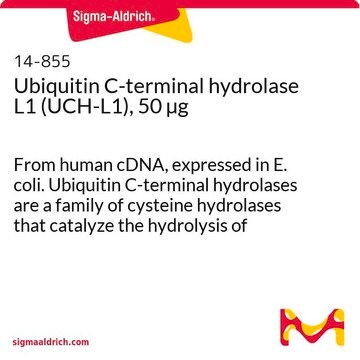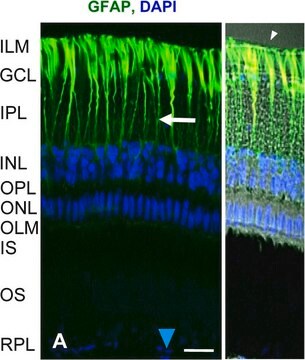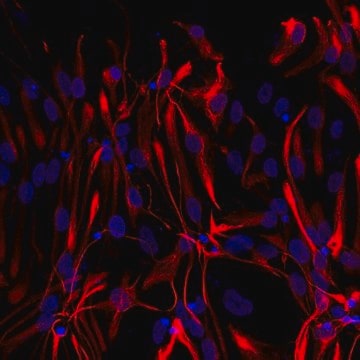AG230
Glial Fibrillary Acidic Protein, porcine
Synonyme(s) :
GFAP
About This Item
Produits recommandés
Source biologique
Porcine
Niveau de qualité
Essai
>99% (pure GFAP)
Forme
liquid
Poids mol.
calculated mol wt 49.44 kDa (428 a.a. spliced isoform; NP_001231326)
calculated mol wt 53.63 kDa (468 a.a. spliced isoform; XP_005668766)
Fabricant/nom de marque
Chemicon®
Concentration
1 mg/mL
Technique(s)
ELISA: suitable
radioimmunoassay: suitable
western blot: suitable
Numéro d'accès NCBI
Numéro d'accès UniProt
Conditions d'expédition
dry ice
Informations sur le gène
pig ... GFAP(396562)
Description générale
Forme physique
Stockage et stabilité
During shipment, small volumes of product will occasionally become entrapped in the seal of the product vial. For products with volumes of 200 μL or less, we recommend gently tapping the vial on a hard surface or briefly centrifuging the vial in a tabletop centrifuge to dislodge any liquid in the container′s cap.
Remarque sur l'analyse
Informations légales
Code de la classe de stockage
12 - Non Combustible Liquids
Classe de danger pour l'eau (WGK)
WGK 2
Point d'éclair (°F)
Not applicable
Point d'éclair (°C)
Not applicable
Certificats d'analyse (COA)
Recherchez un Certificats d'analyse (COA) en saisissant le numéro de lot du produit. Les numéros de lot figurent sur l'étiquette du produit après les mots "Lot" ou "Batch".
Déjà en possession de ce produit ?
Retrouvez la documentation relative aux produits que vous avez récemment achetés dans la Bibliothèque de documents.
Notre équipe de scientifiques dispose d'une expérience dans tous les secteurs de la recherche, notamment en sciences de la vie, science des matériaux, synthèse chimique, chromatographie, analyse et dans de nombreux autres domaines..
Contacter notre Service technique







